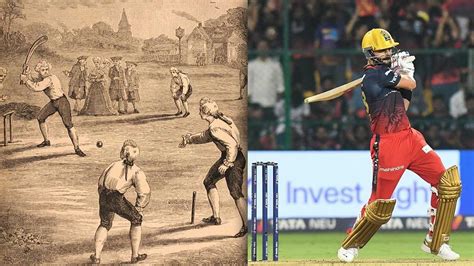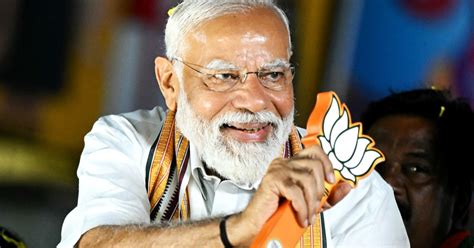Explore the fascinating history, key milestones, influential figures, modern innovations, and cultural impact of cricket throughout time in this comprehensive blog post.Cricket, often referred to as the gentleman’s game, boasts a rich and captivating history that stretches back centuries. From its humble beginnings on the village greens of England to its status as a global phenomenon today, the journey of cricket is one filled with remarkable milestones and influential figures who have shaped the sport we know and love. In this article, we’ll explore the early origins and development of cricket, highlight key milestones that marked its evolution, and celebrate the innovations that continue to redefine the game. Additionally, we’ll examine the cultural impact cricket has had around the world, showcasing how it transcends mere sport to become a beloved tradition. Join us as we delve into the fascinating history of cricket, revealing the stories and transformations that have made it what it is today.
The History Of Cricket: Early Origins And Development
The history of cricket can be traced back to the 16th century in England, where it was likely played by children in the southeastern counties. The game evolved significantly during the 17th century, gaining popularity among adults. It was then that cricket began to take a more structured form, with the establishment of rules and organized play.
By the 18th century, the game had gained a foothold as a national pastime. The first known cricket match took place in 1697, and by the mid-1700s, the game was being played in a more formal setting, often involving large crowds and betting. The formation of the Marylebone Cricket Club (MCC) in 1787 was a pivotal moment in the history of cricket, as it became the custodian of the laws of the game and played a significant role in its development.
Cricket’s rules and equipment underwent notable changes during this period. The invention of the modern bat occurred, transitioning from the flat-sided implement to the shaped bat we recognize today. This evolution not only displayed the sport’s adaptability but also its growing sophistication.
As the 19th century progressed, cricket began to spread beyond England. The British Empire facilitated the game’s introduction to various parts of the world, leading to the establishment of cricket clubs and local leagues in places like Australia, India, and the Caribbean. The rise of international matches began in the late 1800s, with the first official Test match played between Australia and England in 1877, marking a new era in the history of cricket.
Throughout this early development, cricket began to solidify its position not just as a game, but as a vital part of cultural and social life, paving the way for the modern era of the sport.
Key Milestones In The Evolution Of Cricket
The evolution of cricket has been marked by several key milestones that have transformed it from a simple pastime to a globally celebrated sport. Below are some of the most significant events that have shaped The History of cricket:
| Year | Milestone | Description |
|---|---|---|
| 16th Century | Origins in England | Cricket is believed to have originated in England as a children’s game played in the 16th century. |
| 1744 | First Recorded Match | The first recorded match took place in Sussex, marking a key moment in The History of competitive cricket. |
| 1787 | Formation of the Marylebone Cricket Club (MCC) | The MCC was formed, becoming the guardian of cricket laws and pivotal in standardizing rules. |
| 1844 | First International Match | The first international cricket match took place between the USA and Canada, setting the stage for global competition. |
| 1877 | First Test Match | The first official Test match was played between England and Australia, heralding a new era in cricket. |
| 1895 | Introduction of Limited Overs | The beginnings of limited overs cricket paved the way for a faster-paced format, appealing to a broader audience. |
| 1975 | First Cricket World Cup | The inaugural Cricket World Cup was held in England, showcasing the sport on an international stage. |
| 2003 | Introduction of T20 Format | The T20 format was introduced, revolutionizing cricket with its quick matches and entertainment value. |
| 2010 | IPL Launch | The Indian Premier League (IPL) launched, combining cricket with entertainment in a highly commercialized format. |
| 2021 | Emergence of Virtual Coaching | With technological advancements, virtual coaching became prevalent, changing training methods in cricket. |
These milestones not only reflect the growth of The History of cricket but also indicate the sport’s adaptability to changing times and its enduring popularity across diverse cultures.
Influential Figures In The History Of Cricket
Throughout The History of cricket, numerous players and personalities have left indelible marks on the game, shaping its evolution and popularity. Understanding these influential figures provides insight into how cricket transcended beyond being just a sport and transformed into a global phenomenon.
One of the earliest icons of cricket was WG Grace, often referred to as the father of cricket. His charismatic playing style and remarkable statistics in the late 19th century popularized the game in England and brought it to mainstream audiences. Grace’s contributions extended beyond his playing days, as he advocated for the sport and influenced many with his passion.
Moving into the 20th century, Don Bradman emerged as a legendary figure in cricket history, hailed as the greatest batsman of all time. His astonishing average of 99.94 in Test cricket remains unchallenged and illustrates the impact he had on the game’s standards and expectations. Bradman’s unmatched excellence inspired generations of cricketers worldwide.
In the realm of spin bowling, Shane Warne revolutionized the role with his exceptional skill and charisma. Beginning his career in the 1990s, Warne’s ability to spin the ball like no other captivated audiences and changed the game’s dynamics, inspiring many aspiring spin bowlers across the globe.
Another impactful figure is Sachin Tendulkar, celebrated as one of cricket’s greatest batsmen. His remarkable career spanned over two decades and saw him score more than 34,000 runs in international cricket. Tendulkar’s success not only elevated cricket in India but also inspired a generation in a cricket-crazy nation, laying the foundation for the game’s massive following today.
Women’s cricket has also seen influential figures like Ellyse Perry, who has redefined expectations in women’s sports. As an all-rounder for Australia, Perry’s extraordinary performances in both cricket and football have made her a role model for aspiring female athletes, showcasing the potential for excellence in women’s cricket.
These influential figures, among many others, have played pivotal roles in shaping the history of cricket, encouraging its growth across different cultures and contributing to its lasting legacy. Their stories and accomplishments continue to inspire new generations of cricketers and fans alike.
Modern Innovations That Shaped The Future Of Cricket
The evolution of cricket has been significantly impacted by various modern innovations that have transformed how the game is played, viewed, and analyzed. Among these innovations are advancements in technology, equipment, and game formats that have brought cricket into a new era.
One of the most notable innovations is the introduction of Decision Review System (DRS). This system utilizes technology such as ball-tracking and thermal imaging to assist umpires in making accurate decisions. The DRS has enhanced the game’s fairness, allowing teams to challenge on-field decisions with more confidence.
Another significant evolution is the advent of T20 format, which has revolutionized the way cricket is perceived and played. This shorter format has attracted a younger audience and has led to the establishment of various domestic leagues, such as the Indian Premier League (IPL), which has redefined the commercial aspects of cricket.
Technological advancements in broadcasting, such as high-definition (HD) and ultra-high-definition (UHD) broadcasts, along with innovations like players’ tracking systems and sophisticated analytics tools, have enriched the spectator experience. Fans can now enjoy real-time statistics and insights, enhancing their understanding and appreciation of the game.
| Innovation | Description | Impact |
|---|---|---|
| Decision Review System (DRS) | Technology aiding umpires in making correct decisions | Increased accuracy in on-field decisions |
| T20 Format | A faster version of the game, played in about three hours | Broadened the audience and increased commercial opportunities |
| Player Analytics | Use of data to evaluate player performance | Improved training and strategy development |
| Advanced Broadcasting | High-definition and interactive viewing experiences | Enhanced fan engagement and global reach |
Overall, these innovations represent just a fraction of how the game continues to evolve, contributing significantly to the history of cricket and shaping its future. As technology progresses, we can expect cricket to adapt further, ensuring it remains a beloved sport worldwide.
Cultural Impact Of Cricket Throughout Its History
The cultural impact of cricket is profound and far-reaching, often serving as a mirror to societal changes in the countries where it is played. Over the years, the sport has transcended mere entertainment, embedding itself within the social fabric of many nations. From the lush green fields of England to the dusty pitches of India, cricket has shaped collective identities, inspired national pride, and created a sense of unity among diverse populations.
Cricket’s influence is particularly notable in countries such as India, Pakistan, Australia, and the West Indies, where it has become almost a religion. Major tournaments, like the ICC Cricket World Cup, capture the hearts of millions, bringing together fans from different backgrounds to support their teams. The passion associated with the sport has often played a pivotal role in promoting social cohesion amidst regional and cultural differences.
Furthermore, cricket has been a platform for significant historical milestones. During colonial times, cricket became a vehicle for resistance and self-identity, especially in nations under British rule. It fostered a sense of nationalism and pride, leading to the emergence of cricketing legends who were celebrated not just as athletes but as heroes of the people.
| Country | Cultural Significance |
|---|---|
| India | Unity in diversity, national pride during major tournaments |
| Australia | Symbol of ‘fair play’ and cultural identity |
| West Indies | Cultural expression and representation of resilience |
| England | Historical roots and tradition, the birthplace of cricket |
In recent years, the advent of T20 formats has revolutionized cricket, making it more accessible and appealing to younger audiences. This shift has not only influenced how the game is played but has also changed its cultural perception, making cricket a more dynamic and fast-paced sport. The growing popularity of leagues like the Indian Premier League (IPL) has further enhanced its global reach, attracting players and fans worldwide, thus enhancing its cultural impact.
In essence, the history of cricket is intertwined with the history of the societies it touches. The sport continues to evolve, but its capacity to unite and inspire remains a constant, highlighting the powerful role of cricket in shaping cultures and communities across the globe.
Frequently Asked Questions
What are the origins of cricket?
Cricket is believed to have originated in the 16th century in England, with early forms of the game played by children in the southeast of the country.
How did cricket evolve over the centuries?
Cricket evolved from informal street games to a more organized sport, with the establishment of formal rules in the 18th century and the formation of the Marylebone Cricket Club (MCC) in 1787.
What were the key developments in cricket during the 19th century?
The 19th century saw the introduction of the County Championship, the first Test match in 1877, and the establishment of cricket clubs and associations, which contributed to the game’s growing popularity.
How did cricket spread globally?
Cricket spread globally during the British colonial expansion, reaching countries such as Australia, India, South Africa, and the West Indies, where it became a significant sport.
What are the different formats of modern cricket?
Modern cricket has three primary formats: Test matches, One Day Internationals (ODIs), and Twenty20 (T20) matches, each with its own set of rules and duration.
How has technology influenced cricket in recent years?
Technology has significantly influenced cricket through the introduction of tools like Hawk-Eye for ball tracking, Decision Review Systems (DRS), and analytics for player performance.
What is the current state of cricket in the world?
Cricket continues to thrive globally, with major tournaments like the ICC Cricket World Cup and T20 World Cup, and growing participation in women’s cricket, further enhancing its popularity.








